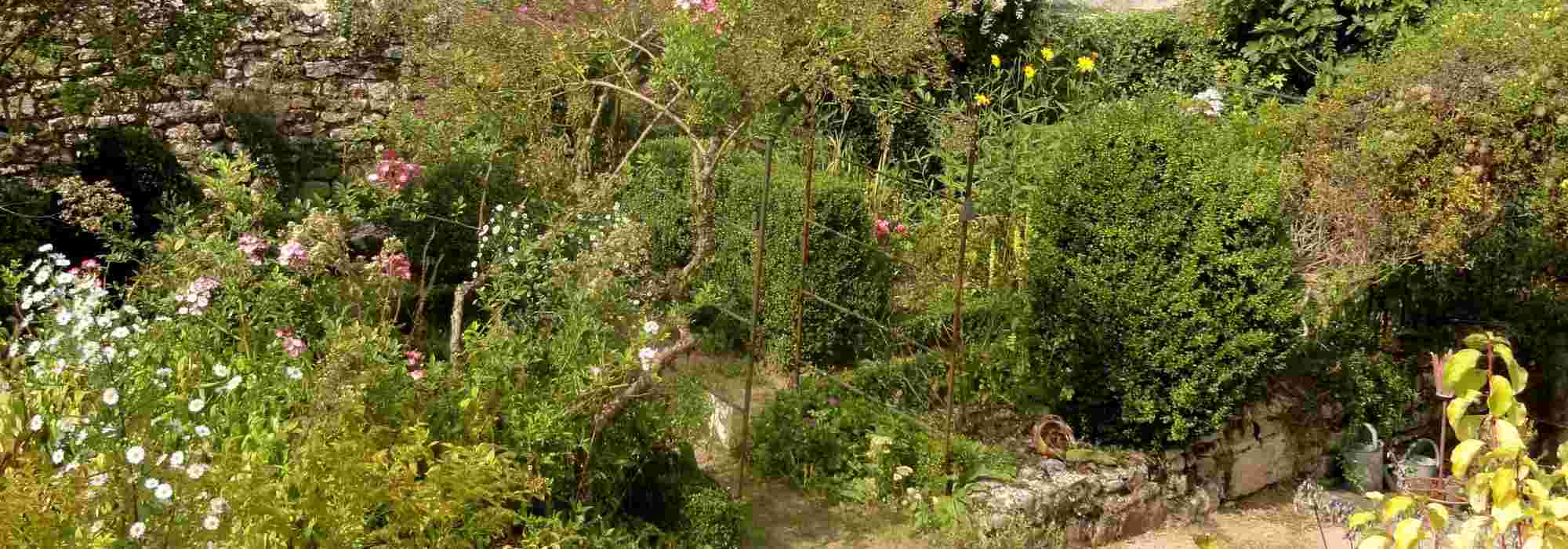
Designing a cottage garden: the main principles
Quaint gardens
Summary
Once confined to the garden adjoining the presbytery, the “jardin de curé” as we say in French is ecclesiastical in name only. It is a cosy garden where fruit, vegetables and fragrant flowers sit side by side in a cheerful, charming jumble. A garden in which life is pleasant, where one can stroll along the paths to pick a rose one moment, an apple the next. Principle behind this type of garden is relatively simple: a few structural, pruned plants, no separation between vegetable and ornamental areas… and above all, easy-to-grow plants. Discover our tips to get started with this type of garden.
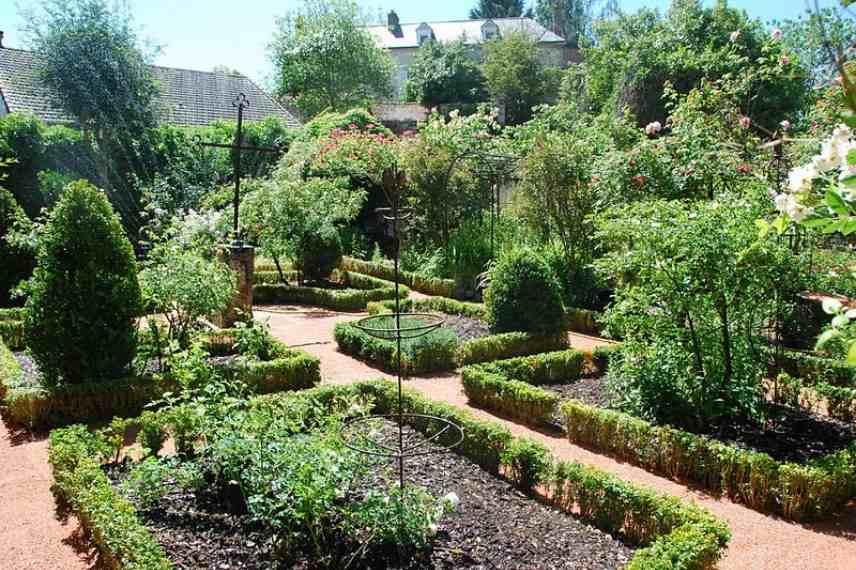
Tool Garden, a very beautiful jardin de curé in Wy-dit-Joli-Village (Vexin)
What is a 'vicarage garden'? Above all, a state of mind!
A little history…
It is difficult to date precisely the earliest “priest’s gardens” that appeared. The beginnings of this type of garden emerged in abbeys and convents in the Middle Ages. This type of garden reflected an aim of self-sufficiency (soon replaced by genuine monastic agricultural enterprises) but also the desire to create a peaceful place within the abbey walls. Later, the true priest’s garden arose out of necessity. A parish priest needed to feed himself, to care for his health and to grow a few flowers to decorate the church. He therefore planted vegetables, medicinal plants and flowers in his small presbytery garden. All in a delightful jumble. The priest’s garden defied the usual practice of separating ornamental garden from kitchen garden.
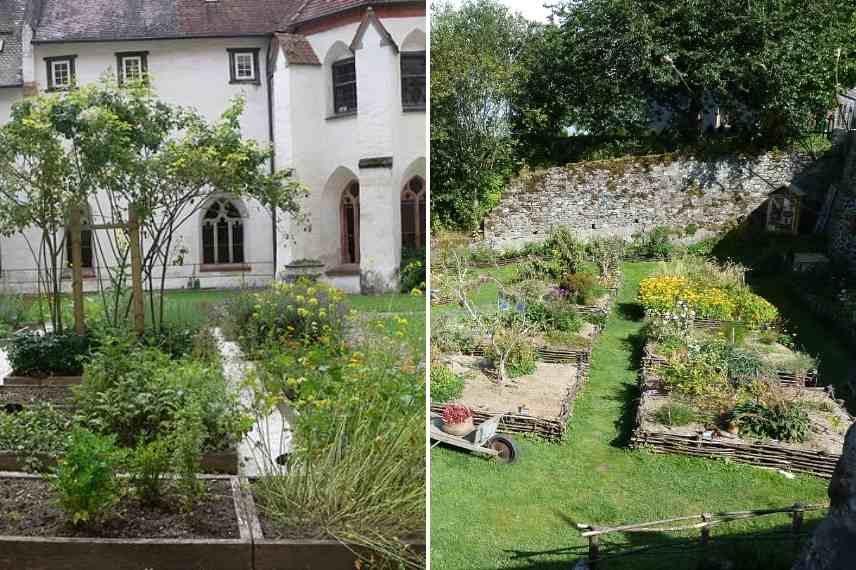
Originally, the medieval garden was enclosed, bounded by walls or next to a presbytery: on the left, presbytery garden at Blaubeuren in Germany; on the right, rampart garden at Besse-en-Chandesse (Puy-de-Dôme)
A strong structure nonetheless
Originally, the priest’s garden was enclosed by walls or a clipped hedge and organised around four planting beds surrounding a water feature. At first, one bed was reserved for vegetables, another for flowers, another for aromatic or culinary herbs and the last for medicinal plants. This layout became less rigid over time…
Simplicity and efficiency above all.
No frills! No fragile or rare plants! No bulky or unnecessary items! Not too high-maintenance! In short, a priest’s garden is a place to enjoy, without fuss. A priest’s garden should also be a place for reflection and meditation.
Mini-oases of biodiversity
The abundance of flowers and bushes providing shelter and food for wildlife makes priest’s gardens a haven for birds, insects, small mammals and also for the gardener himself. Traditionally, a priest’s garden was mainly made up of four vegetable and flower beds with a water feature or a pond for birds at the centre.
You may also read
9 heritage vegetables to grow in the vegetable gardenWhich plants should I choose for my parsonage garden?
Vegetables
Prioritise crops that yield most on a small area. First, think of runner beans and climbing peas, courgettes, rhubarb, lettuces, all kinds of alliums (onions, garlic, shallots…) and, ultimately… a bit of everything as vegetables. Creating a vegetable plot in a priest’s garden is also an opportunity to restore space to heirloom vegetables: parsnips, orache, Jerusalem artichokes, crosnes… And why not try perennial vegetables too, such as Daubenton’s cabbage, rocambole garlic, artichoke… ?
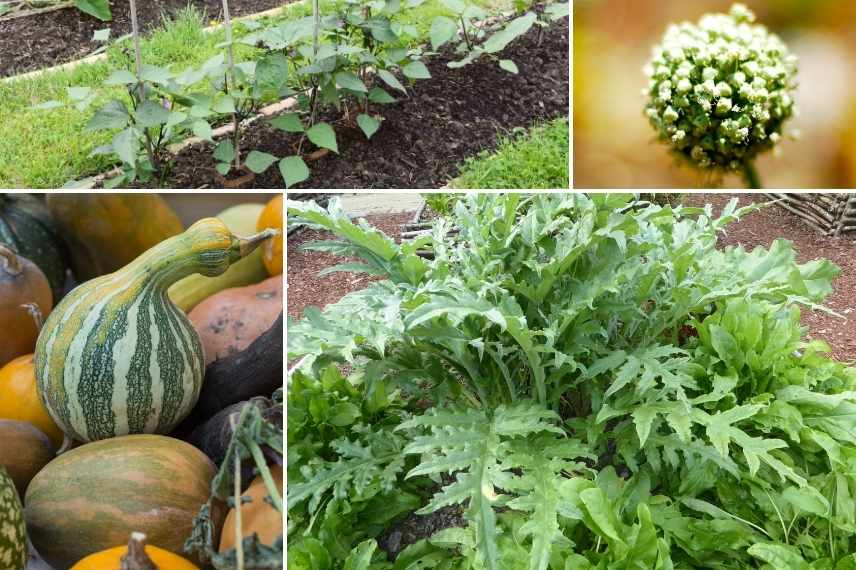
Runner beans, garlic, gourds, artichoke
Fruits
Principle is to obtain good production on a fairly small area, using very hardy and resilient plants. A small patch of strawberries, a few small fruit bushes such as currants, gooseberries, hazel, blackcurrant, raspberries, an attractive espaliered vine (originally intended for sacramental wine!) and a few espaliered or columnar pear and apple trees.
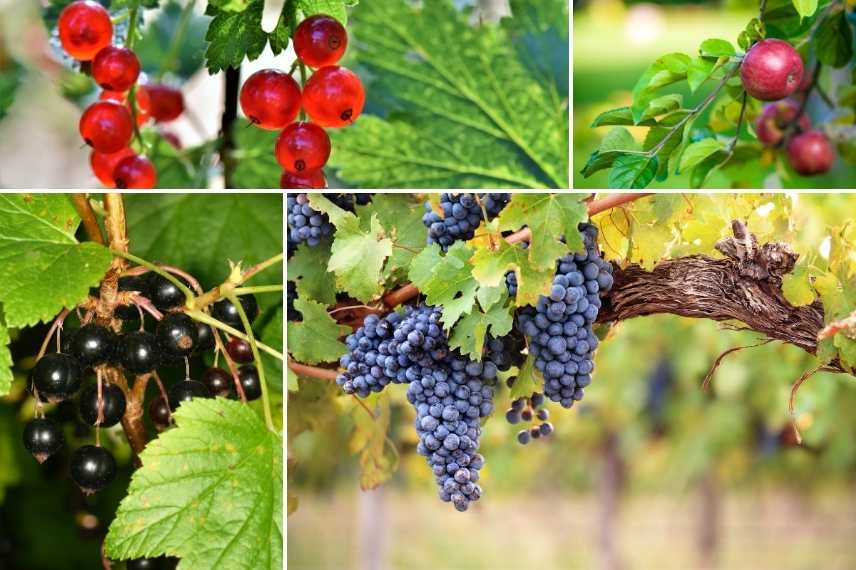
Soft fruits, vine and apple trees form basis of kitchen garden
Simple, fragrant flowers
Annuals, perennials or bushes — it doesn’t matter as long as it’s beautiful, easy to grow and smells good. Among annuals, favour flowers that grow and even self-seed such as cosmos, nigellas, California poppies, nasturtiums, marigolds…
Among perennials and bulbs, choose classics such as peonies, arums, hardy geraniums, hostas, phlox, bleeding hearts, crocuses, irises, lilies…
For bushes, opt for traditional choices: mock orange, lilac, snowball viburnum, forsythia, flowering currant, hydrangeas… and of course old-fashioned roses with delicately scented blooms. All this profusion of flowers will soften somewhat the strictness of the basic geometric plan (see structure of garden below).
Note that a priest’s garden gives pride of place to plants with a Christian connotation in their names: Madonna lily, honesty, lady’s gloves (foxgloves), bleeding heart, God’s eye (Lychnis coronaria), Lady’s mantle (Alchemilla), star of Bethlehem (Ornithogalum ombellatum), nigella (Damascus nigella), St Anthony’s laurel, Eye of Christ (Aster amellus) … and many more.
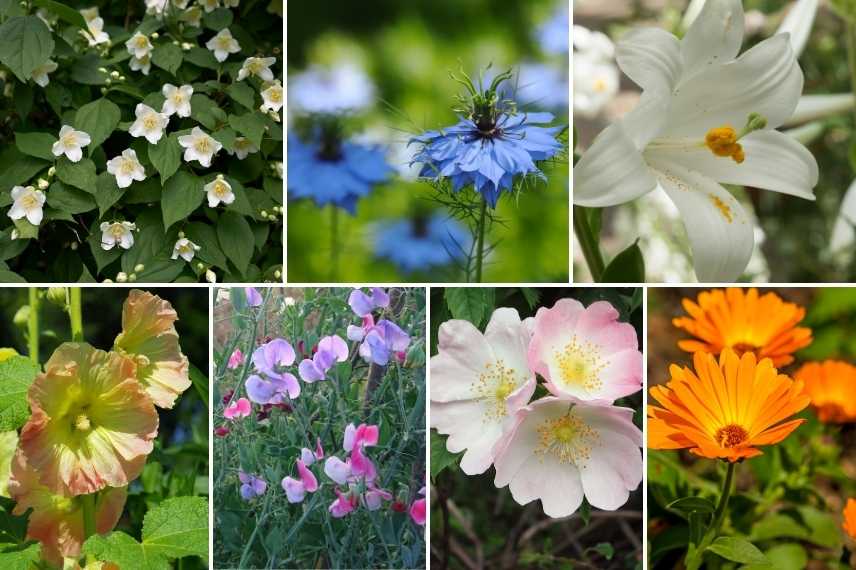
Mock orange, nigella, Madonna lily, hollyhock, sweet pea, dog rose, marigolds… flower freely in garden
Aromatic and medicinal plants
The herb garden, a vegetal bridge between flowers and vegetables, naturally has its place in a priest’s garden: fennel, coriander, rosemary, thyme, mint, basil, oregano, sage, parsley, bay… But the priest always kept a small space for well-known medicinal plants: the garden of “simples” or Hortus medicus. So it’s unsurprising to find St John’s wort, foxgloves (both poison and medicine), chamomile, echinacea, hyssop, sage and even hops and hawthorn.
A quick word from Oli: bear in mind that medicinal plants are not always harmless. You must know and recognise plants well before thinking of using them medicinally. So exercise caution and, in other words: don’t eat just anything!

Agastache, angelica, lemongrass, mugwort, thyme, nasturtium, fennel… The garden of simples is beautiful and melliferous
Structural plants
Originally, priest’s gardens were structured by a surrounding hedge (or better still walls), some clipped yews and common hollies and above all short clipped box hedges surrounding the vegetable and flower beds. Box has suffered in recent years but can be advantageously replaced, for example, by Lonicera nitida or Ilex crenata. It’s also possible to mark out the beds with wooden boards or hurdles. Ideally, in a priest’s garden, choose relatively low or clipped bushes, so as to offer an unobstructed view over the whole garden. Large trees should therefore be avoided.
This apparent “rigidity” of the initial plan can be seen as a strong structure that invites calming of mind (and soul). This very “square” structure derives from a Roman influence (itself coming from Persian and Greek gardens). This Roman influence is easily explained by the usual readings of medieval clerics, who were very attached to certain ancient Roman authors. Later, plantings and in particular the profusion of flowers typical of priest’s gardens will soften the geometry of the initial plan.
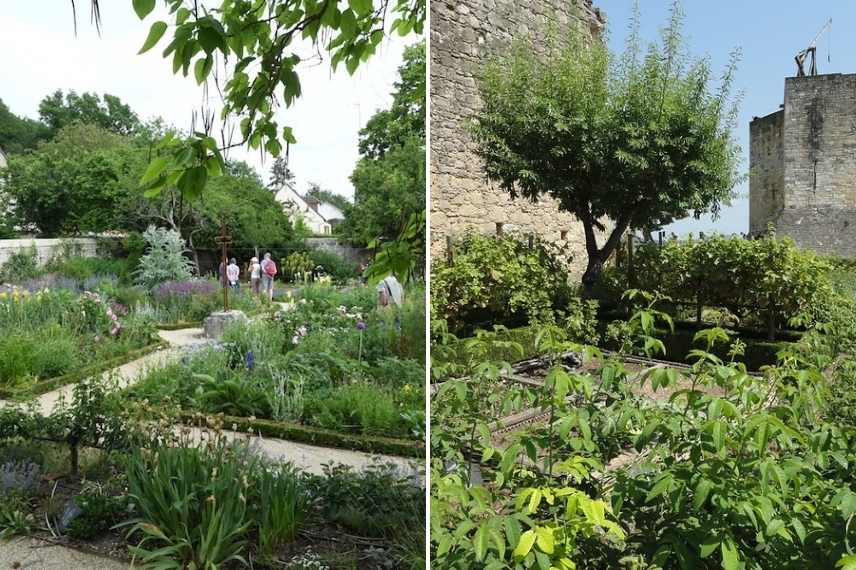
Box edgings define spaces at the presbytery garden of Chedigny (Photo C. Gaye), hurdles at the Castelnaud garden (Photo: Damien-Flickr)
Caring for a vicarage garden
Garden maintenance will be reduced to its simplest form. Vegetable garden will take up most of your time while rest of garden will only take a few hours here and there.
Pruning of small box hedges (or an alternative to box) as well as of fruit trees and other bushes will take up the rest of the time without being too difficult to manage.
You’ll notice there are few, if any, short grass meadows in a priest’s garden. They were considered too time-consuming to maintain and, above all, to take up space for nothing. However, paths between vegetable and flower beds are sometimes turfed.
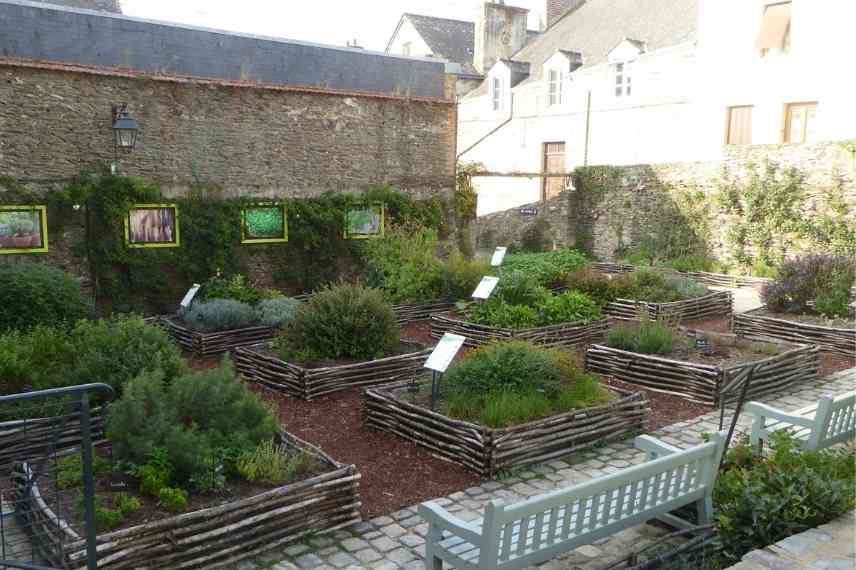
Charming medieval garden of Josselin, Morbihan, France (Photo: Gwenaëlle David Authier)
You may also read
7 indestructible bushes for beginner gardenersTo learn more...
Places to visit :
Presbytery Garden at Chedigny, in France (editor’s note: in fact, the whole village is extraordinary!)
- Subscribe!
- Contents
































Feedbacks